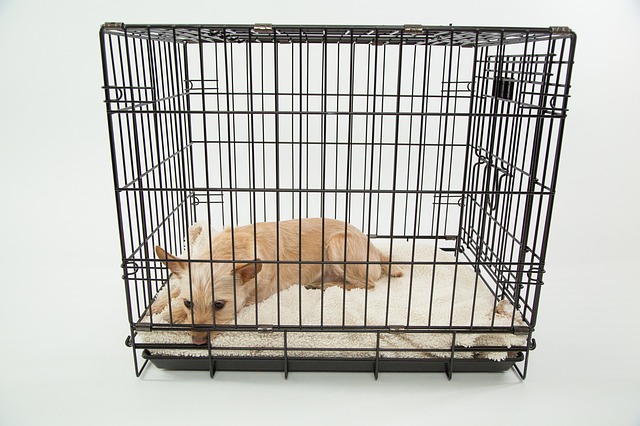If you get your dog used to the fact that the Dog Crate is a place for fun, and not necessarily something bad or a punitive space, there will be no problems with the cage.
One of the biggest mistakes you can make is not training your puppy to stay in a cage or enclosure. It only takes a little practice, effort, work and love to associate the cage with a comfortable place to stay, and it will be much easier for you to train with it.
The misconceptions you can most often hear about a cage are: keeping a puppy in a cage or enclosure is cruel, inhumane, or “my puppy goes there when he eats my slippers”. The cage or fence should be a place for the dog to rest, a personal space that he will adore. Like humans, dogs need some space of their own, a place to rest, where they will feel safe and comfortable. Anyone who tells you that a dog should never be in a cage or enclosure is mistaken.
Teach your puppy to love a cage
Puppies may not like a cage or enclosure from the start. There is a possibility that they will show undesirable behaviors such as barking, the owners usually say “crying”, they may scratch, howl, etc. It can be very frustrating for you as owners, carers, and lovers, but by no means let it out of the cage.
The most important rule when teaching a puppy to stay in a cage is not to let him go while “crying” or barking because you do not want him to show such behaviors. The right moment to let him go is the moment when the puppy is “silent” for at least five seconds. Only then can you open the cage door.
Containers with food and water should be in the cage, and in that way the puppy will accept it much faster.
If you give in and let go of the dog once he shows undesirable behaviors, he will realize that by barking, whining, scratching he always gets something from you and will constantly repeat undesirable behaviors to get what he wants, but it is because you, consciously or unconsciously, rewarded such behavior.
You always open the cage door the moment the puppy calms down, ie. when it exhibits the behavior you want. Each puppy will react differently to the cage because it all depends on how the puppy was taught in the litter and whether it was taught at all.
Dog’s crate should be used for training, not punishment
Never, but never use the cage as a punishment, a place where you will put the dog because it ate your shoe, which you found destroyed when you came home.
You should always associate the cage or fence with positive things. Every healthy puppy wants to eat, so he is motivated by food, the meals you give him will be more than enough to connect the cage and positive associations.
Feeding should always be done in an enclosed space, and in addition to food, put various toys and chewable objects in the cage or fence, to make the puppy’s stay in the cage fun, a pleasant experience and to accept the cage in a positive way.
You are the one who has to make the time spent in a cage or enclosure beautiful and fun.
In addition to serving you to have constant control, the cage also serves to accustom the dog to being left alone. When you leave him alone later while giving some interest while you are not there, upon your return you will not find a demolished apartment.
Also, in the beginning, immediately after releasing the puppy from the cage, take it in your hands and take it outside. The puppy is still small and there is no chance for him to endure such a long journey to the grass without urinating in the house or apartment along the way.
The dog must never stay in the enclosure for more than five hours, due to the development of boredom. Therefore, if you work all day, consider the option of having someone save it.
During training, the most important thing is for the dog to be happy, if you present the cage as a place for fun, there will be no problem.





